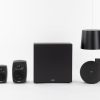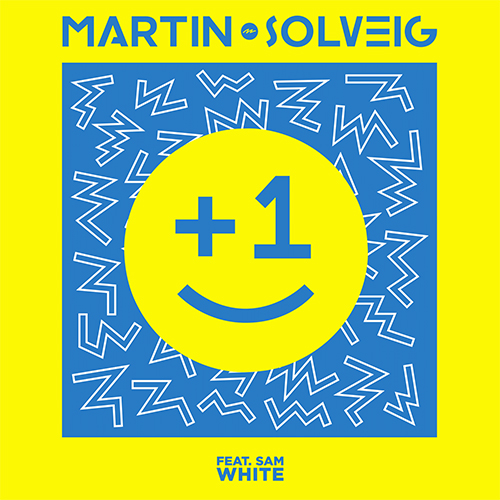-
 play_arrow
play_arrow
Clubalicious Clubalicious Radio
-
 play_arrow
play_arrow
London Calling Podcast Yana Bolder

| MIX VERDICT: SOFTUBE FLOW MASTERING SUITE |
| THE TAKEAWAY: “There’s a lot to like about Flow Mastering Suite. You get a collection of terrific Softube-modeled processors that you can use inside the Flow Mastering environment or as conventional plug-ins…. This product will be best for those with at least some mastering chops.” |
| COMPANY: Softube • www.Softube.com PRICE: $14.99/month subscription PROS: • 16 excellent processors that can be used inside or outside the main plug-in. • Flows created by pro mastering engineers. • Flow Control macros. • Flow Guides. CONS: • You can’t substitute processors in Flows or create Flows with custom lineups. • With the subscribe-to-own plan, it takes 11 years to own all the processors. |
Two product trends that have picked up over the last couple of years are DIY mastering plug-ins and software subscription plans. Softube’s new Flow Mastering Suite combines them both.
Available exclusively through a “subscribe-to-own” model, Flow Mastering Suite features 16 Softube plug-ins that open inside a proprietary mastering plug-in. Many are emulations of hardware mastering processors, and AU/AAX/VST/VST3 versions are included, so you can also use them in any DAW or audio editor.
The Flow Mastering Suite is meant to be opened on the master bus or when mastering a stereo mix, though you could also use it on a subbus in a mix. In addition, the plug-in features a low-latency mode that allows you to use it while tracking without any sync issues.
Many DIY mastering software products use AI to create settings or starting points based on an analysis of the audio. Softube takes a different approach by tapping into the expertise of a group of professional mastering engineers to create 13 signal chains called Flows, which were created for specific genres and mastering situations.
Each Flow contains a signal chain made up of a subset of the included processors and presents a set of macros referred to as Flow Control knobs, which govern critical parameters or combinations of them. The control capabilities are different for each Flow.
Available Flows include Organic Rock, Pop Production, Big Rock, Pop Dance, Starting Point, Beatmaker, Rock Production, Vocal Driven, Low-End Control, Modern Master, Clean and Wide, Fast Forward and Weiss Master.

THE PROCESSORS
Many of the processors in Flow Mastering Suite are modeled versions of professional mastering hardware. The collection includes three from Chandler Limited: Curve Bender Mastering EQ, Germanium Compressor and Zener Limiter. All of these let you shape the audio with authentic-sounding analog character. My favorite is the Germanium Compressor, a dynamics processor that’s great for adding vibe to your track, whether you’re using it in a mastering situation or on an individual track or bus.
A half-dozen Weiss plug-ins are included. Because Weiss makes digital processors, Softube was able to port the code used in the original hardware into its plug-ins. EQ-1 is a versatile, dual 7-band compressor/limiter/de-esser that functions as a Minimum- Phase, Linear-Phase or Dynamic EQ. The others are the DS1-MK3 compressor limiter, Deess, EQ-MP, a low-latency, high-precision digital EQ and the MM-1 Maximizer.
A pair of Tube Tech emulations are included: The Tube-Tech Equalizer Mk II features Pultec-style EQ, and the SMC2B is a threeband opto-compressor.
Rounding out the superb collection are several original plugins from Softube. Bus Processor provides compression and saturation. Although it’s not a strict emulation of an SSL console bus compressor, it’s clearly inspired by one.
The Widener processor offers tools for adjusting the stereo image—including five selectable widening algorithms—and lets you create a stereo image from a mono source. Clipper is a peak clipper for adding loudness. Opto Compressor closely emulates an LA-2A-style unit. Tape offers analog tape simulation.
THE DISPLAYS
The Flow Mastering Suite GUI is large because it displays quite a bit of information. However, you can freely scale it down if it’s taking up too much space. Like all Softube plug-ins, it features an Input Panel on the left and an Output Panel on the on the right side.
Each contains meters that show Peak or True Peak, and momentary, short-term, and integrated LUFS or RMS. These meters are critical parts of the workflow and include crucial level-setting features. There’s also an option to turn on True Peak Limiting, which is particularly helpful if you’re trying to comply with streaming service targets, which require True Peak readings no higher than -1 dBTP.
The Input Panel has a button called Set Target. After pressing it and playing at least four seconds of your track, it will automatically adjust the input to -16 LUFS, which is the sweet spot for the settings of the 13 Flows.
The Output Panel has a critical feature called Gain Match. Pressing the Gain Match Input button adjusts the output so that the processed and unprocessed audio are at the same volume, making it easy to A/B using the built-in Bypass switch. The Gain Match Target button sets the output to a user-specified LUFS level (measured in Short-Term LUFS), with -14 LUFS being the default.
The center of the GUI offers various types of real-time visual feedback. At the click of a button, it shows frequency, stereo image or gain reduction. If Auto Mode is selected, the display automatically switches between the three display types based on which Flow Control knob you’re adjusting.
The A/B/C/D buttons on the right side of the main display allow you to load up to four different Flows at a time and compare their results. This is a compelling feature.

THE FLOW
Getting started with a Flow Mastering Suite project is easy. After opening the plug-in and setting the input level and output target, you click on the Open Flows button, which brings up a screen where you choose the most appropriate Flow for your project.
After selecting one, its signal chain shows up in the form of thumbnails of each processor. They’re configured from left to right near the bottom of the GUI and correspond to their order in the chain. Clicking on a thumbnail opens a large version of that processor, with its controls accessible.
In the upper part of the GUI are the Flow Control knobs, which were given descriptive names such as Focus EQ, Limiter, Tape Compression, and so on. To get the most from them, the plug-in features a helpful operational model called Flow Guides. When active, hovering your mouse over a Flow Control knob opens a dialog explaining what parameters on which processor (or processors) it’s controlling and how that affects the sound.
For example, in the Pop Dance Flow, one of the Flow Control knobs is labeled Top Air. The Flow Guide tells you that it’s controlling the Air parameter in Bus Processor and the left and right Treble controls in the Chandler Curve Bender. You’ll also see a link icon next to each parameter that the knob controls. In any Flow, you can unlink a parameter from its macro by clicking on the corresponding link icon.
Telefunken Elektroakustik TF17 — A Mix Real-World Review
Those who are new to mastering will find the Flow Control knobs extremely helpful, not only for improving the final result but also for learning mastering strategies.
Surprisingly, there’s no way to add processors to a Flow (although you can disable individual ones in an existing Flow and save an edited Flow as a preset), and you can’t add parameters to a macro or create your own. Considering that Flow relies more on a user’s engineering abilities than its AI-based competitors, I assumed you’d be able to create Flows with custom combinations of the processors.
Hopefully, that’s something Softube will add in an upcoming version. Right now, the only way to add one of the processors is to open it in a channel insert in your DAW’s mixer before or after the Flow plug-in.
THE MASTERING, THE FLOWDOWN
I tried Flow Mastering Suite on mixes in various styles. After picking an appropriate Flow and setting the input and output levels, it brought my songs to my desired loudness target and improved their overall EQ, dynamics and stereo width before any additional adjustments.
Because every song has unique frequency and dynamic characteristics, you’ll always need to make some additional adjustments. For that, I found the Flow Control knobs extremely helpful for zeroing in on critical parameters.
There’s a lot to like about Flow Mastering Suite. You get a collection of terrific Softube-modeled processors that you can use inside the Flow Mastering environment or as conventional plug-ins.
The Flow Mastering plug-in is exceptionally well-designed and provides a great deal of valuable visual feedback. The 13 Flows cover many styles and mastering strategies and instantly improve your music. The Flow Control macros offer adjustments critical to improving your track’s sound and provide insight into how pro engineers approach mastering.
If you’re a mastering novice, I wouldn’t count on immediately getting results on par with those on an AI-based plug-in. This product will be best for those with at least some mastering chops.
•. •. •
SIDEBAR: The Deal
It’s worth discussing Softube’s “subscribe to own” plan because it’s unusual. Each month your subscription is active, you receive 30 credits, roughly two credits per U.S. Dollar or Euro spent, based on the $14.99/month subscription price. Once you accrue enough credits, you can visit Softube’s Credit Store and use them to purchase any of the included processors, which cost 79 to 549 credits.
Because of the 2:1 credits-to-dollars ratio, you’re getting a 50 percent discount on the list price of the processors. Based on the average price, you’ll get enough credits to purchase about 1.5 processors per year. To buy them all would take almost 11 years of subscribing.
Written by: Admin
Similar posts
Recent Comments
No comments to show.Featured post

Latest posts
Current show

Uplifting Only
Ori Uplift
Abora has enjoyed success in the broader EDM music world too: Since 2012, Abora has won the Future Favorite on Armin van Buuren's A State of Trance 13 times, more than any label except Armin's Armada itself.
closeUpcoming shows

Fresh Is Fresh
This Weeks Hottest Releases
02:00 - 09:00
Finnish Dance Chart
Top 40 Hottest Dance Tracks In Finland
09:00 - 11:00
Fresh Is Fresh
This Weeks Hottest Releases
11:00 - 16:00
Stereo Productions
Chus Ceballos
16:00 - 17:00
Scandinavian Dance Chart
Top 40 Hottest Dance Tracks In Scandinavia
17:00 - 19:00Chart
Powered by Dee jay promotions visit us












 Invalid license, for more info click here
Invalid license, for more info click here